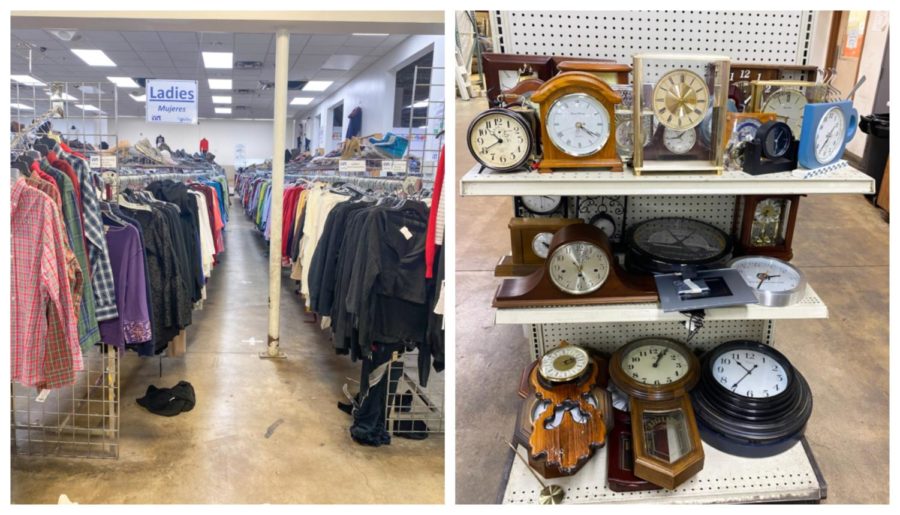Reduce, Reuse, Recycle: How thrift shopping is good for our economy and planet
Saint Vincent de Paul’s ladies section and beautiful vintage clocks.
Vintage clothing has made a return and it’s not going absent anytime soon. Organizations such as Goodwill and the Salvation Army were outlined as outlets to supply low-priced products for those who simply can’t afford first-hand clothing.
Thrifting is going to a shop or outlet that sells second-hand clothes and goods for affordable prices compared to their full-priced retail counterparts. People can save a lot of money by thrifting rather than shopping at retail shops.
Thrift stores often have sales on top of their incredibly low prices. So by thrift shopping, people can get good quality clothes and items for very low prices.
Whereas shopping at stores such as Goodwill and the Salvation Army is an action that middle-class and upper-middle-class customers ought to maintain a strategic distance from. Aside from being cheaper, many thrift stores sell brand new clothes. That’s right, many stores sell clothes that still have their original tags on them.
“Fast fashion and sustainability compete with each other. People who go out and buy cheap, name-brand, clothes that are trendy. and then you have the people who go thrifting and buy more sustainable pieces and hold on to them for longer. It’s more of an individual struggle rather than an economic struggle,” said Highlands High School FCS Teacher Ahren Wagner.
Additionally, many influencers promote thrifting because of its economic and environmental benefits. When people buy clothes second-hand they are preventing a massive waste of energy and resources used to produce new clothes. This is a great way to reduce people’s carbon footprint.
“Thrifting is so beneficial to the planet. I thrift not only to get cute clothes but to help save the environment,” said Junior Abi Pate.
It is true that shopping online reduces carbon footprint and that it causes pollution to drive to thrift stores. But, frequent online purchases produce more packaging waste, and online items tend to come from different distribution centers. Both factors result in higher greenhouse gas emissions per item.
Many children learn that plastic and paper end up in landfills and are bad for the environment. Although this is true, it’s not the whole story. In 2018, 17 million tons of textile waste ended up in landfills, according to data from the Environmental Protection Agency, making up 5.8 percent of the total MSW generation that year.
At HHS, many students are involved in the thrifting community.
Sophomore Natalie Chalk said, “Thrifting is really making a difference in the world because it is helping to sustain our environment by reducing energy consumption, air pollution, keeping our oceans cleaner, and it helps people to save money.”
It is perhaps in the best interest of people and the environment alike, as long as the practice of thrifting continues to flourish. This makes it one of the most effective ways to shop fashion sustainably. After all, one man’s trash is another man’s treasure.
Your donation will support the student journalists of Highlands High School. Your contribution will allow us to cover our annual website hosting costs.



